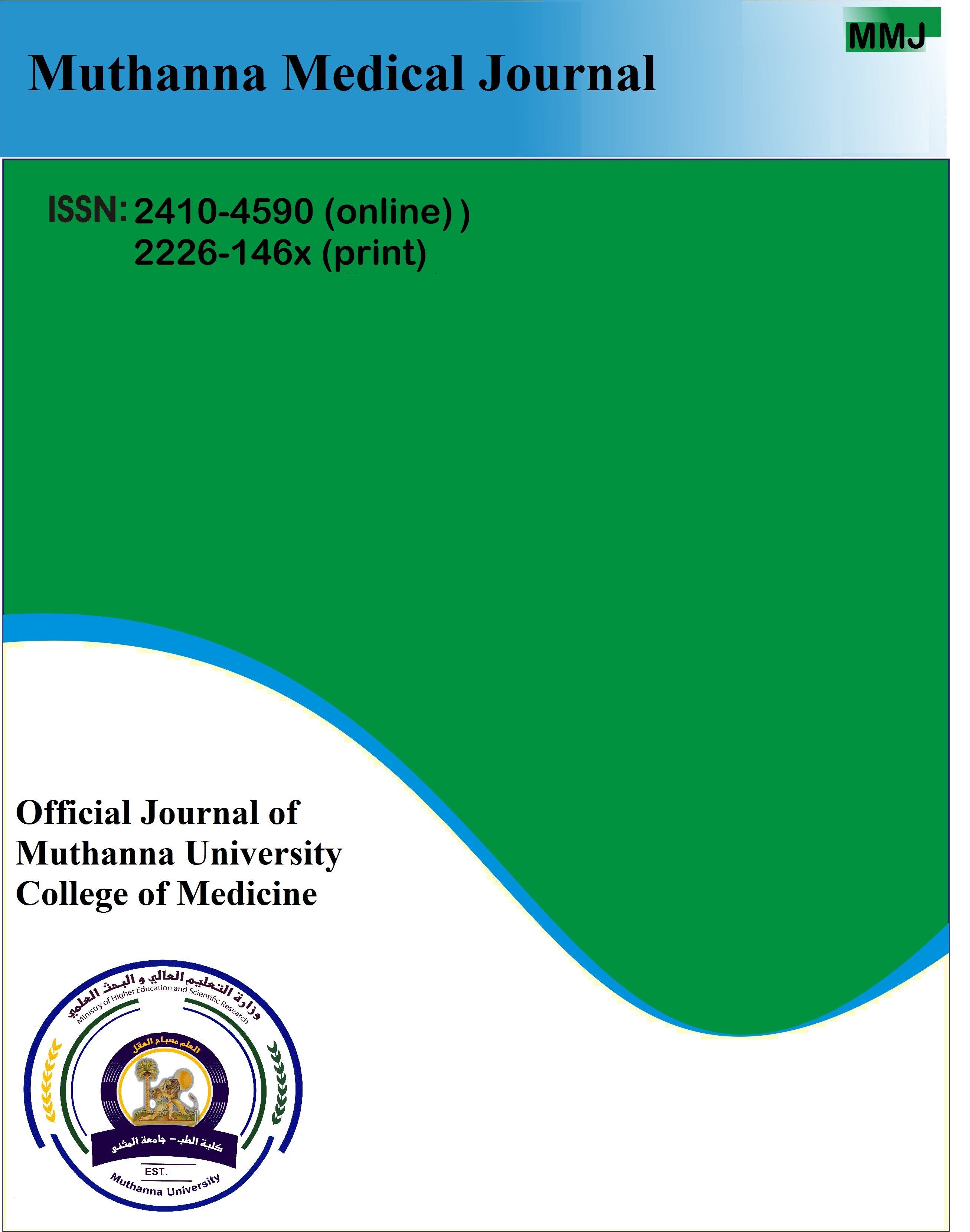Muthanna Medical Journal
Khalid K. Al-Aaraji 1*, Majid abd Alhassan 2, Ahmed Mohammed Ali Mohsen Alhusseini 3, Thikra M. Al-Mutairy 4, Sarmad Abbas Mohamm 2, Dhamiaa Maki Hamza 1
Copyright © 2023 Al-Aaraji, et al. This is article distributed under the terms of the Creative Commons Attribution License http://creativecommons.org/licenses/by/4.0), which permits unrestricted use, distribution, and reproduction in any medium, provided the original work is properly cited
Abstract
Enteric fever or typhoid fever is a life-threatening multi-system infection common in underdeveloped nations. Blood cultures give unequivocal proof of infection and are the cornerstone of laboratory diagnosis. RDTs detect IgM within 2–3 days after infection. IgM indicates a recent infection, while IgG indicates a distant infection. Study goal: To examine the role of serological tests as a first test while waiting for blood culture results and to demonstrate IgM and IgG accuracy in recognizing typhoid illness in children. Cross-sectional research with analytic component done at the Karbala Children's Teaching Hospital. The research included 81 children with typhoid-like symptoms, including fever, headache, vomiting, and stomach discomfort. The investigation yielded hematological, biochemical, and serological outcomes. A blood culture was performed to verify the diagnosis. Most study participants (78/96.3%) had positive anti-salmonella IgM findings, whereas 32/39.5% did. Blood cultures diagnosed 47 (58%) study individuals with typhoid fever (Salmonella infection). Positive blood cultures provide 43 (91.5%) ciprofloxacin-susceptible isolates. Anti-salmonella IgM has 95.7% sensitivity and 5.6% specificity. 70.8% anti-salmonella IgM accuracy. Anti-salmonella IgG had 38.3% sensitivity and 61.1% specificity. Anti-salmonella IgG had 44.6% accuracy. The major sign of enteric fever is a high body temperature, along with anorexia, vomiting, stomach discomfort, and headache. The main risk factor is water availability. Serological tests with a positive IgM result serve a significant role in diagnosing typhoid fever and commencing antibiotic treatment early while waiting for blood culture results.
Keywords: Girls, Women, Premenstrual dysphoric disorder, Environmental factors